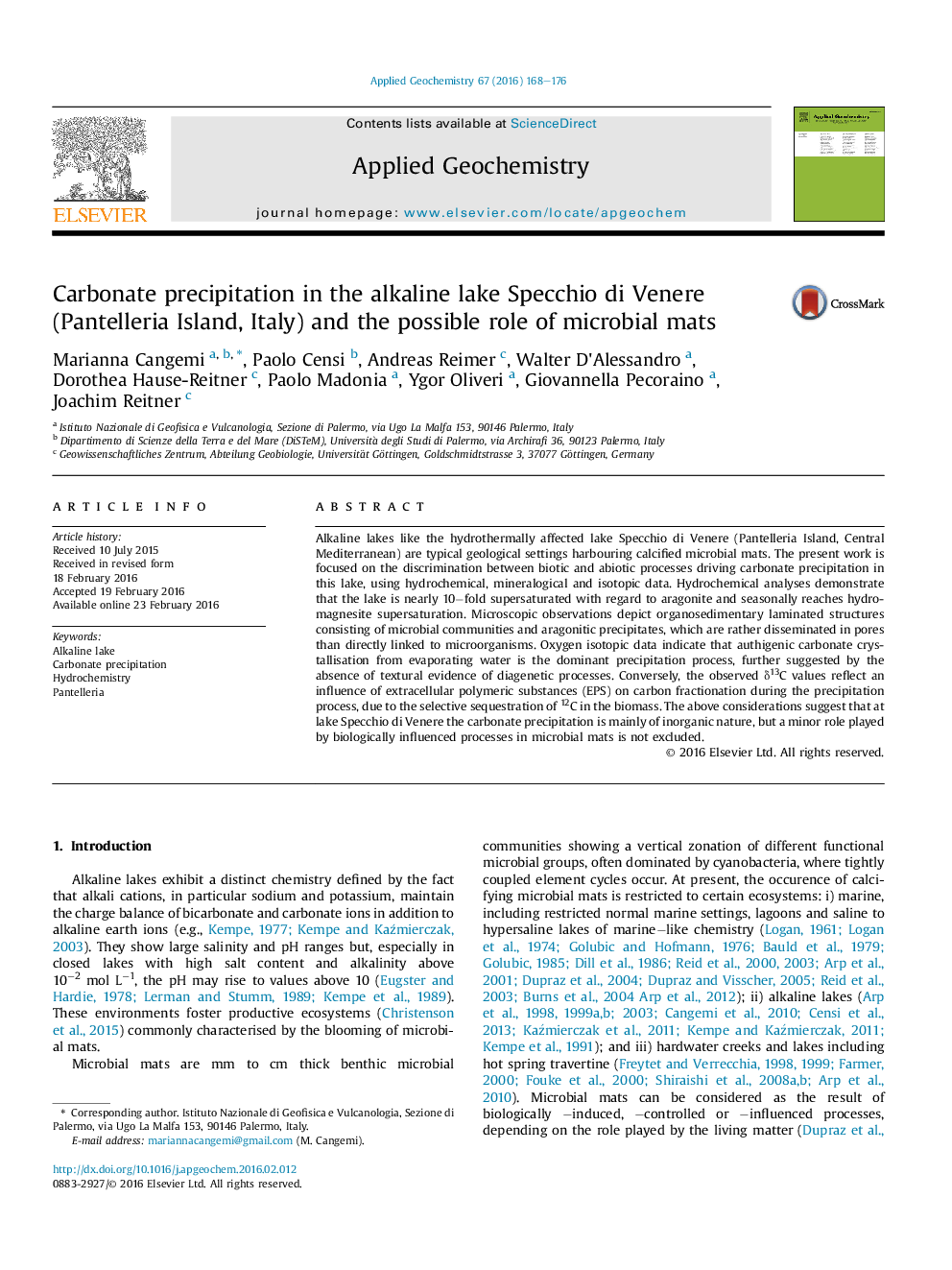| Article ID | Journal | Published Year | Pages | File Type |
|---|---|---|---|---|
| 4435608 | Applied Geochemistry | 2016 | 9 Pages |
•Biotic and abiotic processes can drive carbonate precipitation in alkaline lakes.•Geochemical and isotopic data help to discriminate between these.•Hydrochemistry and mineralogy suggest abiotic precipitation.•δ13C indicates possible biologically–influenced processes.
Alkaline lakes like the hydrothermally affected lake Specchio di Venere (Pantelleria Island, Central Mediterranean) are typical geological settings harbouring calcified microbial mats. The present work is focused on the discrimination between biotic and abiotic processes driving carbonate precipitation in this lake, using hydrochemical, mineralogical and isotopic data. Hydrochemical analyses demonstrate that the lake is nearly 10−fold supersaturated with regard to aragonite and seasonally reaches hydromagnesite supersaturation. Microscopic observations depict organosedimentary laminated structures consisting of microbial communities and aragonitic precipitates, which are rather disseminated in pores than directly linked to microorganisms. Oxygen isotopic data indicate that authigenic carbonate crystallisation from evaporating water is the dominant precipitation process, further suggested by the absence of textural evidence of diagenetic processes. Conversely, the observed δ13C values reflect an influence of extracellular polymeric substances (EPS) on carbon fractionation during the precipitation process, due to the selective sequestration of 12C in the biomass. The above considerations suggest that at lake Specchio di Venere the carbonate precipitation is mainly of inorganic nature, but a minor role played by biologically influenced processes in microbial mats is not excluded.
